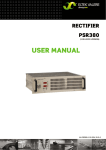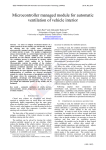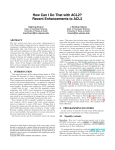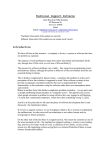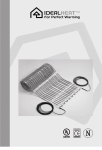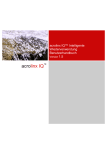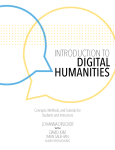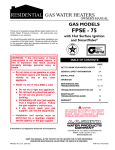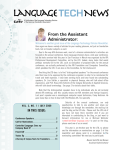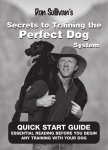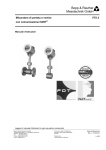Download Translatability - mikedillinger.com
Transcript
Tools and Techniques for Translatable Content Mike Dillinger, PhD [email protected] Association for Machine Translation in the Americas, 2006 Cambridge, MA Translatability Who cares? How translation works Three dimensions of Translatability Content Form Processes Tutorial: Translatable Content AMTA 2006 ©2006 [email protected] 2 1 Who cares? Businesses who want to: Increase customer satisfaction Increase sales Increase documentation quality Increase brand consistency Decrease stress, headaches, attrition, extra hours Decrease costs Decrease time to market Decrease exposure to liability Cope with acquisitions/mergers/outsourcing Tutorial: Translatable Content AMTA 2006 ©2006 [email protected] 3 ©2006 [email protected] 4 Who cares? The ROI story [ROI calculator] Tutorial: Translatable Content AMTA 2006 2 How translation works n Documentation Department sends material for translation o Localization Department filters out incoming sentences that have already been translated p Translation Vendor produces draft translations q Translators revise draft translations r Documentation department assembles and distributes translations This is part of the Content Supply Chain See: http://contentsupplychain.blogspot.com Tutorial: Translatable Content AMTA 2006 ©2006 [email protected] 5 How translation works Send material out n Documentation Department sends material for translation [e.g., User Manual] What size chunks of material? Paragraphs? Chapters? Books? What else does the translation package include? When is the translation due? Does Marketing use the same process? Tutorial: Translatable Content AMTA 2006 ©2006 [email protected] 6 3 How translation works Filter out already-translated sentences o Localization Department filters out incoming sentences that have already been translated Translation memory tools 100% matches : ) But still not free Fuzzy matches Alternative formulations of the same content Translation memory is very sensitive to any kind of variation Tutorial: Translatable Content AMTA 2006 ©2006 [email protected] 7 How translation works Filter out already-translated sentences Fuzzy matches This dialog box is available in more than one application. This dialog box is available in more than one contract application. Click OK to save changes and return to the application tab . Click OK to save the record and return to the application tab . Tutorial: Translatable Content AMTA 2006 ©2006 [email protected] 8 4 How translation works Produce draft translations p Translation Vendor produces draft translations Distribute parts of the project to different translators By hand or (increasingly) by machine a) Translators read and understand the original text in English b) Translators draft “the same information” in L2 c) Translators revise (with an L2 mindset) so that the result is normal L2 text Tutorial: Translatable Content AMTA 2006 ©2006 [email protected] 9 How translation works Produce draft translations a) Translators read and understand the original text in English Translators understand, as possible, given: unknown words, unknown sentence structures, unfamiliar topics, etc. Think of how bad it can get for interpreters! ,Heads up! Even proficient speakers of English as a Second Language read English at about a 7th grade level User Manuals are often written at an 11th grade level “Pre-editing” is needed both for human and for machine translation Tutorial: Translatable Content AMTA 2006 ©2006 [email protected] 10 5 How translation works The problem zone Technical terms General vocabulary Complex grammar Unusual grammar Expressions Topic knowledge Etc. Human Tech Writers Grammar The problem zone End users Human translators MT systems TM systems Vocabulary Tutorial: Translatable Content Support staff have problems Grammar Your Customers have problems AMTA 2006 Human translators have problems ©2006 11 QA staff have problems Translation reviewers have problems New writers have problems Translation memory Technical terms systems have General vocabulary problems Complex grammar Human Tech Writers The problem zone Unusual grammar Machine Expressions Translation Topic knowledge systems Etc. have End users Human translators MT systems TM systems problems Vocabulary Tutorial: Translatable Content [email protected] AMTA 2006 Spelling checkers have problems ©2006 [email protected] 12 6 How translation works Produce draft translations b) Translators draft “the same information” in L2 Adjust for inexistent sentence structures “Someone was given a watch.” In Mandarin: “A watch was given to someone.” Adjust for translations that have more common but irrelevant meanings “The manager has personally passed all the water served here.” (In an Acapulco hotel) Teacher > profesor or profesora (Sp) Eat > essen or fressen (Ger) Tutorial: Translatable Content AMTA 2006 ©2006 [email protected] 13 How translation works Produce draft translations c) Translators revise (with an L2 mindset) so that the result is normal L2 text Systematic use of terminology is difficult for humans Conformity to style guides is difficult for humans ,Heads up! When time and/or training are insufficient, this step suffers most. “Post-editing” is needed both for human and for machine translation Tutorial: Translatable Content AMTA 2006 ©2006 [email protected] 14 7 How translation works Produce draft translations Some vendors and companies are doing many of the draft translations with Machine Translation technology MT is much faster MT is much cheaper MT is much more consistent Machine Translation is both viable and cost effective for draft translations. Quality of the output depends more on writers’ conformance to style guides than to limitations of the technology Microsoft is using a writer-direct-to-multilingual-web system for support KB Océ implemented tight integration between writers and translation technologies, cutting localization costs by 60% and translation time by months. Now they’ve spun the technology off into a new company. SAP, ATT, etc. Tutorial: Translatable Content AMTA 2006 ©2006 [email protected] 15 How translation works Revise draft translations q Translators revise draft translations (“post-editing”) Translation errors Familiar words from one language interfere with understanding similar words from the other realize ~ realizar (Ptg) [accomplish] wish [want] ~ ??? (Jap) Source-text writers simply can’t keep track of these things Synonyms Due to lack of linguistic knowledge Due to lack of topic knowledge Due to unclear input Same or different meanings? Have, are made up of, are composed of, contain Word lists Guessing the intended meanings is difficult File Tutorial: Translatable Content AMTA 2006 ©2006 [email protected] 16 8 How translation works More is going on More is going on: The Localization Department then Localization (by hand) of screen shots and figures Localization of software: menus, button labels, error messages, etc. Adjustment of page layout Checks that returned translations are complete Samples the translations for quality Discovers that the source text has already changed Organizes files into manuals or help directories Checks functionality of help systems Sends translations out for in-country testing The Documentation Department then Assembles and distributes the documents Tutorial: Translatable Content AMTA 2006 ©2006 [email protected] 17 All too often, you get back just what you sent out: Ladies, leave your clothes here and spend the afternoon having a good time. (In a Rome laundry) Ladies are requested not to have children in the bar. (In a Norwegian cocktail lounge) Specialist in women and other diseases. (In the office of a Roman doctor) Daily plate -- shrimp in spit. (In a Brazilian restaurant) These are human translations, eh? Tutorial: Translatable Content AMTA 2006 ©2006 [email protected] 18 9 Visitors are expected to complain at the office between the hours of 9 and 11 A.M. daily. (In a hotel in Athens) Please do not feed the animals. If you have any suitable food, give it to the guard on duty. (at a Budapest zoo) Cooles and Heates: If you want just condition of warm in your room, please control yourself. (from a Japanese information booklet about using a hotel air conditioner) To stop the drip, turn cock to right. (In a Finnish washroom) Tutorial: Translatable Content AMTA 2006 ©2006 [email protected] 19 Example Contents of what? What’s important? Before using [this product warranty information] or Before using [this product] ?? >Line breaks are ambiguous! the following information this Tutorial: Translatable Content AMTA 2006 ©2006 [email protected] 20 10 Translatability Three dimensions Three dimensions of Translatability Translatable Content How to make the information more translatable? Translatable Form How to make the sentences more translatable? Process How to deploy processes that facilitate translation? Tutorial: Translatable Content AMTA 2006 ©2006 [email protected] 21 Translatable Content Translatable Content is understandable content Control writers’ assumptions about readers’ background knowledge a) Background knowledge of culture Avoid culture-specific language and examples Avoid humor, sarcasm, irony, idioms, metaphors Avoid political, religious, or local geographic references Avoid acronyms – AMTA Massage therapy or Machine translation? Tutorial: Translatable Content AMTA 2006 ©2006 [email protected] 22 11 Translatable Content b) Background knowledge of the product Assume that the reader knows nothing about the product Use specific examples as often as practical Make the text understandable even if the translator can’t see the screen By definition, translators are NOT familiar with your product Most often, translators don’t have a copy of the product c) Background knowledge of technology It’s extremely easy for people who are familiar with technology to assume that other people are equally familiar with it. Tech Support people can very easily supply dozens of examples where this assumption is false. Translators are very often not very familiar with technology There’s a great collection of unusual assumptions at: http://rinkworks.com/stupid/ Tutorial: Translatable Content AMTA 2006 ©2006 [email protected] 23 Example Customer: "Hello, is this Tech Support?" Tech Support: "Yes, it is. How may I help you?" Customer: "The cup holder on my PC is broken and I am within my warranty period. How do I go about getting that fixed?" Tech Support: "I'm sorry, but did you say a cup holder?" Customer: "Yes, it's attached to the front of my computer." Tech Support: "Please excuse me if I seem a bit stumped, it's because I am. Did you receive this as part of a promotional, at a trade show? How did you get this cup holder? Does it have any trademark on it?" Customer: "It came with my computer, I don't know anything about a promotion. It just has '4X' on it." The caller had been using the load drawer of the CDROM drive as a cup holder and snapped it off the drive. Tutorial: Translatable Content AMTA 2006 ©2006 [email protected] 24 12 This is how your documentation sounds to translators and users: Is this caused by problems with Spelling? Punctuation? Grammar? Terminology? Sentence length? Formatting? The writing here follows most style guides. If the balloons popped, the sound wouldn't be able to carry since everything would be too far away from the correct floor. A closed window would also prevent the sound from carrying, since most buildings tend to be well insulated. Since the whole operation depends upon a steady flow of electricity, a break in the middle of the wire would also cause problems. Of course, he could shout, but the human voice is not loud enough to carry that far. An additional problem is that a string could break. Then there could be no accompaniment to the message. It is clear that the best situation would involve less distance. Then there would be fewer potential problems. With face-to-face contact, the least number of things could go wrong. Tutorial: Translatable Content AMTA 2006 ©2006 [email protected] 25 Next steps Tools for Translatable Content None for monitoring content explicitly yet Content type checking in XML BUT term and style checking help catch unplanned terms and sentence types Techniques Training Audits Know your clients Build empirical (not intuitive) reader profiles FAQ hit rates from support staff and support pages Sales, Marketing, Product Managers Direct feedback and suggestions User conferences Feedback from translation vendors Foster community-driven documentation Further reading Sun Microsystems (2003). Read me first!, Chapter 7 Tutorial: Translatable Content AMTA 2006 ©2006 [email protected] 26 13 Translatable Form Form How to make the sentences more translatable? Use translatable vocabulary and terminology Use translatable sentence structure Writing “for MT”? Other Tutorial: Translatable Content AMTA 2006 ©2006 [email protected] 27 Translatable Form Vocabulary and terminology Translatable vocabulary and terminology Use a word in the same way throughout your documents Same part of speech, same meaning Rècord, recórd Your work, to work Especially in the same sentence Do not use synonyms Translators assume that synonyms are different words with different technical senses Avoid unusual (for the reader) word usage To select a labor, select Select Record . Do not invent new words or word senses Be careful with technical terms that are also common everyday words Class, pool, windows, labor, etc. Tutorial: Translatable Content AMTA 2006 ©2006 [email protected] 28 14 Translatable Form Vocabulary and terminology Translatable Vocabulary and terminology Avoid colloquial and regional expressions Especially two- and three-word verbs Bundle glossaries with texts for translation Bundle preferred translations of terms with texts for translation Provide example sentences for word lists If you get hung up on the details, … Avoid or document word ambiguity (2) File as in… Manage your terminology Technical and non-technical words, as well Know which terms are most frequent These are the ones that need close revision Reduce the number of words used only once or twice Tutorial: Translatable Content AMTA 2006 ©2006 [email protected] 29 Next steps Tools for Terminology Management MultiTerm Wordsmith Spreadsheet on the intranet, at least Integrated term and style checking Techniques acrocheck, CLAT, Boeing / HyperSTE Training Terminology committee Audit: key-terms analysis Further reading Wright, SE & Budin, G. 1997. Handbook of Terminology Management (2 vols). Amsterdam: John Benjamins. Tutorial: Translatable Content AMTA 2006 ©2006 [email protected] 30 15 Translatable Form Sentence structure Translatable Sentence structure “Readability plus” Avoid unusual or complex sentence structures Aim for 7th- or 8th-grade reading level Much current documentation is at an 11th-grade level As much for translators as for translation memory systems Adverbs Avoid directional adverbs Drag your cursor across the screen. >Make your cursor cross the screen by dragging it. Override, underachieve Tutorial: Translatable Content AMTA 2006 ©2006 [email protected] 31 Translatable Form Sentence structure Translatable Sentence structure “Readability plus” Prepositions Use prepositions only for spatial and temporal meanings 90% of all prepositions: of, in, to, for, on, with, at, by, from, as, into, about, after Put prepositional phrases next to the item that they complement Remove the filler panel from the slot with the pliers Use pliers to remove the filler panel from the slot Tutorial: Translatable Content AMTA 2006 ©2006 [email protected] 32 16 Translatable Form Sentence structure Translatable Sentence structure “Readability plus” Conjunctions Take extra care with and and or Sorry, only one conjunction per sentence Parallelism is essential Verbs Do not omit “that” for verb complements Do not use passive sentences Do not use two- or three-word verbs Do not change commonly used transitivity Based on the current item, one of the following applications launches: If the item is a valve, the Valves application launches. Tutorial: Translatable Content AMTA 2006 ©2006 [email protected] 33 Translatable Form Sentence structure Translatable Sentence structure “Readability plus” Nouns Do not use noun stacks with more than 2 elements Each route stop may have its own job plan, which the system copies to the child route stop work order Avoid –ing nouns [Drinking water] is good for you. Cooking rocks! (Rebecca Ray cookbook) ~how to cook rocks ~rocks for cooking ~cooking is cool Tutorial: Translatable Content AMTA 2006 ©2006 [email protected] 34 17 Translatable Form Writing “for MT”? Writing “for” machine translation? The myth: MT requires special writing The reality: People require special writing Reuther (2003) The rules are pretty much the same for human translators and for machine translation systems [and for end users] Simplified (Technical) English “Controlled” English “Consistent” “Technical” English English running wild Tutorial: Translatable Content in the yard, broken fence in the house, well-trained muzzled, on a leash bound and gagged More constraints Fewer constraints AMTA 2006 ©2006 [email protected] 35 Translatable Form Writing “for MT”? Seven Rules shared by at least four controlled-language specifications (O’Brien, 2003): Use only approved words from dictionary When appropriate, use an article or demonstrative adjective before a noun Do not make noun clusters longer than three nouns Avoid the gerund (-ing) Do not omit relative pronouns such as “who”, “which” or “that” Use only active voice Make instructions as specific as possible Tutorial: Translatable Content AMTA 2006 ©2006 [email protected] 36 18 Next steps Tools for Translatability Management Integrated term and style checking Techniques acrocheck, CLAT, Boeing / HyperSTE Training: authors don’t know about this Training: improve style guides Audit: Translatability analysis Audit: Reuse analysis Planning: identify and prioritize issues Further reading Kohl, J. (1999). “Improving translatability and readability with syntactic cues” Technical Communication, vol. 46, no. 2, pp. 149-166 Tutorial: Translatable Content AMTA 2006 ©2006 [email protected] 37 Translatable Form Other topics Lay out the text to permit different text lengths, different paper sizes Be careful with text variables To avoid DTP in the target language In some contexts, they have to be capitalized or not Programmers HAVE TO put all strings in resource files, not in the code Who revises their English? Improve Development Environments for better string management Tutorial: Translatable Content AMTA 2006 ©2006 [email protected] 38 19 Translatable Processes Processes How to make processes that facilitate translation? a) Reduce the amount of text for translation b) Make translation itself easier c) Improve the processes that support translation Tutorial: Translatable Content AMTA 2006 ©2006 [email protected] 39 Translatable Processes Reduce the amount of text for translation Reduce the amount of text for translation Write Reuse less Write only what the clients need Reassess relevance Content on demand? Content inventory vs. JIT more Cross-departmental reuse Topic reuse Sentence reuse “Single-sourcing” Simplify updates Tutorial: Translatable Content AMTA 2006 ©2006 [email protected] 40 20 Next steps Tools for Content Reduction Single-sourcing Techniques Ex: AuthorIT, Documentum, Idiom Use Machine Translation! Planning: Develop a reuse map Training: Do a content-lifecycle analysis Training: Writing for reuse Audit: Reuse analysis Know your clients Further reading Ament, K. (2003). Single Sourcing: Building modular documentation. Norwich, NY: William Andrew. Rockley, A. (2002). Managing Enterprise Content: A unified content strategy. New York: New Riders. Tutorial: Translatable Content AMTA 2006 ©2006 [email protected] 41 Translatable Processes Make translation itself easier Make translation itself easier Write for translatability Mine translator feedback Wrest control of interface strings from engineering Include multilingual glossaries Part of the translation package Standardize tools and file formats Keep translation memories up to date Maintain hit-rate data Anticipate translation problems Cut down on screen shots Lay out for translations that are 30% longer Make updates easier Tutorial: Translatable Content AMTA 2006 ©2006 [email protected] 42 21 Next steps Tools for Translatability Management Techniques Integrated term and style checking acrocheck, CLAT, Boeing / HyperSTE Training: authors don’t know Training: improve style guides Audit: Translatability analysis Audit: Reuse analysis Further reading Kohl, J. (1999). “Improving translatability and readability with syntactic cues” Technical Communication, vol. 46, no. 2, pp. 149-166 Tutorial: Translatable Content AMTA 2006 ©2006 [email protected] 43 Translatable Processes Improve the processes that support translation Improve the processes that support translation Adopt a supply-chain mentality! Communicate & Coordinate Know your suppliers upstream Know your clients downstream Anticipate their needs systematically Success means things are easier for everyone Automate Simplify the Content Supply Chain Workflow software is essential the Content Supply Chain <insert controversial discussion here> Tutorial: Translatable Content AMTA 2006 ©2006 [email protected] 44 22 Translatable Processes Improve the processes that support translation Marketing, Sales, C-level vision The Company Design, Product management Engineering Documentation QA/review Localization In-country QA Publication The Market Training End users Support The Content Supply Chain Tutorial: Translatable Content AMTA 2006 ©2006 [email protected] 45 Translatable Processes Improve the processes that support translation The Company Engineering QA/review Design Documentation Product management Training Marketing Sales C-level vision End users In-country QA Localization Publication Support The Market The Content Forum Tutorial: Translatable Content AMTA 2006 ©2006 [email protected] 46 23 Next steps Tools for optimizing processes Techniques Content Mgmt Systems, Globalization Mgmt Solutions, Enterprise Content Mgmt, etc. Wikis, a blackboard approach C-level involvement Six Sigma, ISO 9000, etc. Access engineers’ development environment Access support’s data on FAQs Further reading Friedman, T. (2006). The World is Flat. New York: Farrar, Straus & Giroux. Tutorial: Translatable Content AMTA 2006 ©2006 [email protected] 47 Summing up Who cares about translatability? How translation works Three dimensions of Translatability Translatable Content Translatable Form How to make the information more translatable? How to make the sentences more translatable? Process How to deploy processes that facilitate translation? Tutorial: Translatable Content AMTA 2006 ©2006 [email protected] 48 24 Thanks Thanks for your attention More questions? Tutorial: Translatable Content AMTA 2006 ©2006 [email protected] 49 25

























